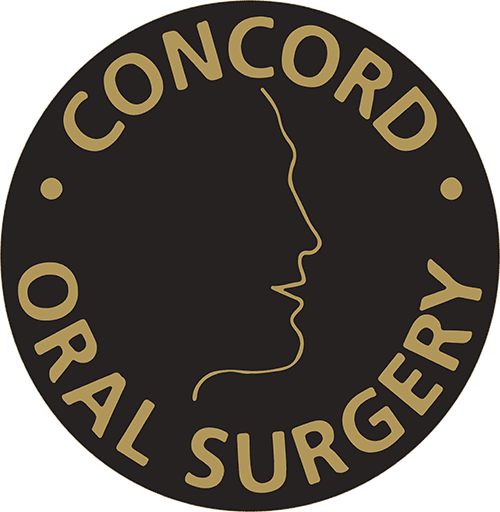Platelet Rich Fibrin (PRF) is a second-generation platelet concentrate.
It is derived directly from a patient’s blood, making it entirely natural and autologous, meaning it’s sourced from the patient’s body.
This composition primarily includes concentrated platelets, growth factors—proteins essential for the healing process—and a fibrin matrix, which is a network of protein fibers that aid in tissue repair.
Key Takeaway
Platelet rich fibrin is a safe and natural treatment that promotes faster healing, reduces discomfort, and lowers the risk of complications in oral surgery procedures.
PRF in Dentistry
In recent years, PRF has gained popularity in dentistry as a biomaterial that significantly promotes healing and tissue regeneration.
It is used in many maxillofacial and oral surgery procedures, including dental implants, bone and soft tissue grafting, sinus lifts, and tooth extractions.
How PRF is Created
The process of creating PRF is relatively simple and can be done in the office.
It begins with a small blood drawn from the patient’s arm, similar to a routine blood test.
The blood is then placed in a centrifuge machine, which separates PRF from the other components of the blood, such as red and white blood cells.
PRF is obtained through slow centrifugation, allowing for the creation of a fibrin matrix that facilitates a slower, more sustained release of growth factors compared to PRP.
This fibrin matrix is key in providing a scaffold that aids tissue regeneration over a longer period. PRF does not contain any additives, making it a completely natural and biocompatible option.
Benefits of PRF in Dentistry
There are many advantages to using PRF in oral surgery procedures.
- Accelerated healing: The growth factors present in PRF stimulate tissue repair and regeneration, resulting in faster healing times.
- Reduced pain and inflammation: PRF has anti-inflammatory properties that help minimize pain and swelling after surgery.
- Improved bone and soft tissue grafting: The use of PRF in grafting procedures has been shown to improve success rates and integration of the graft.
- Minimized risk of complications: As PRF is obtained from the patient’s own blood, there is a reduced risk of infection and rejection compared to other materials.
Applications of PRF in Oral and Maxillofacial Surgery
PRF is proving to be highly versatile in oral and maxillofacial surgery, offering benefits across a range of procedures. Its ability to improve healing and minimize complications makes it particularly valuable in complex surgical practices.
Below, we explore how PRF is used in various dental and maxillofacial applications to improve patient outcomes.
Dental Implants
PRF is particularly beneficial in dental implant procedures.
It enhances osseointegration, which is the direct structural connection between the implant and jawbone.
By promoting faster healing and providing a rich source of growth factors, PRF helps the implant bond with the bone, reducing the time required for recovery and increasing the overall success rate of the implant.
Bone Grafting
In bone grafting procedures, PRF serves as an excellent supplement to traditional grafting materials.
It promotes bone regeneration by providing a scaffolding that supports new bone growth while supplying growth factors that stimulate cellular activity.
This accelerated healing process leads to faster recovery and improved outcomes.
Sinus Lifts
For sinus lift surgeries, the use of PRF can lead to better outcomes and more efficient recovery.
Sinus lifts are often performed to add bone to the upper jaw where it is required to support implants.
PRF helps in the integration of the added bone material by creating a favorable environment for new bone formation. The application of PRF reduces inflammation and helps stabilize the grafting material, improving the overall success rate of the procedure.
Soft Tissue Grafting
PRF is also advantageous in soft tissue grafting, where it helps improve the quality of the gum tissue.
It can significantly improve the aesthetic outcomes by promoting healthy, strong, and well-integrated gum tissue around teeth and implants.
By speeding up the healing process and reducing post-operative discomfort, PRF helps patients achieve optimal results with minimal downtime.
Tooth Extractions
PRF accelerates socket healing and minimizes post-extraction complications, such as dry sockets, particularly after wisdom tooth removal.
The application of PRF in the extraction site provides a natural clot that protects the area and enriches it with healing factors that promote rapid recovery. This leads to less discomfort and faster healing for the patient.
Discover the Benefits of PRF at Concord Oral Surgery
With a growing body of research supporting its efficacy, PRF has emerged as a valuable tool in modern dentistry and oral surgery.
Its natural composition, minimal risks, and many benefits make it an excellent option for promoting healing and reducing complications in various procedures.
We offer PRF to our patients as part of our commitment to providing the latest and most effective treatment options for optimal outcomes.
If you have any questions or would like to learn more about PRF and its applications, please don’t hesitate to contact us. To book an appointment at our oral surgery office in Vaughan, call (905) 669-2616 or complete the appointment request form.
FAQs About Platelet Rich Fibrin
Is platelet-rich fibrin worth it?
Yes, PRF has been shown to significantly improve healing and tissue regeneration in dentistry, making it a valuable tool for oral surgery procedures. It is a natural and biocompatible option with minimal risks and many benefits.
What is the difference between PRP and PRF?
PRP stands for platelet-rich plasma, while PRF stands for platelet-rich fibrin. While both are derived from the patient’s blood and contain growth factors. PRP is obtained through fast centrifugation, while PRF is obtained through slow centrifugation, resulting in a different composition and properties. PRP is primarily used for soft tissue and skin rejuvenation, while PRF has more applications in dentistry.
What are the side effects of platelet-rich fibrin?
As PRF is obtained from the patient’s own blood, there is a minimal risk of side effects or complications. However, as with any medical procedure, there may be some temporary discomfort or mild swelling at the injection site.
